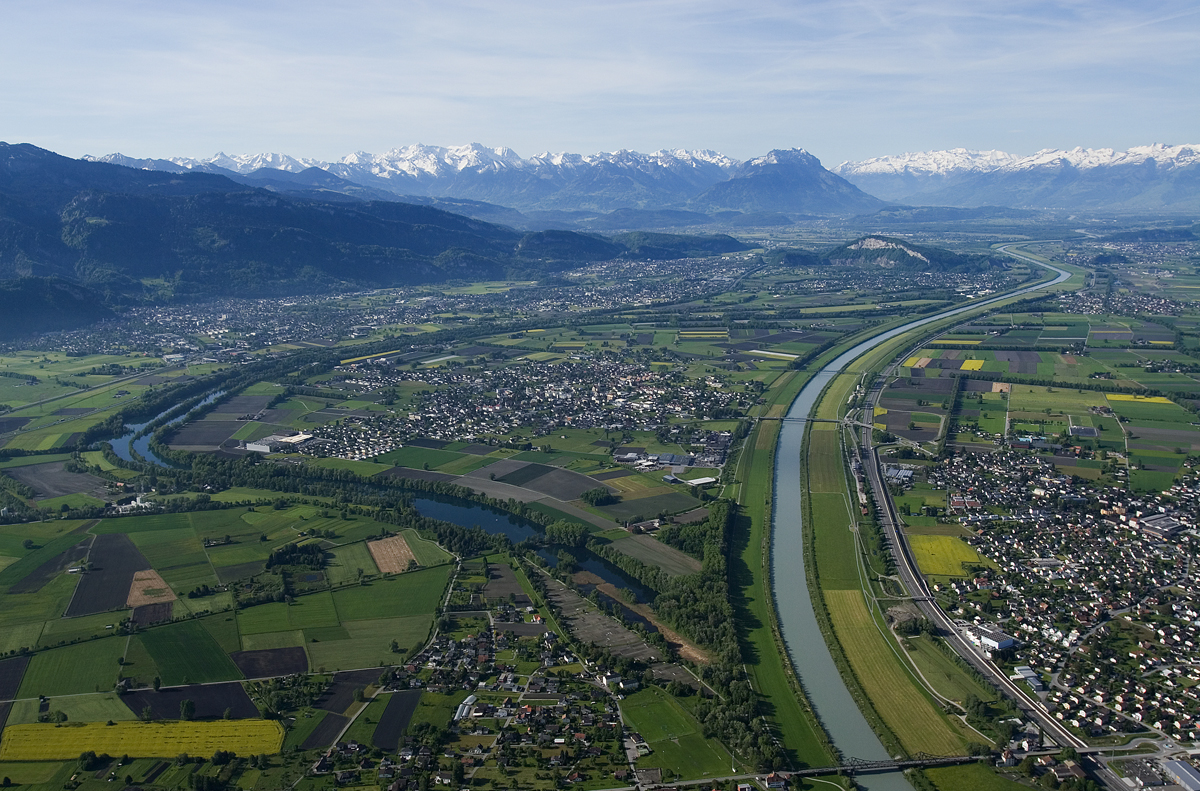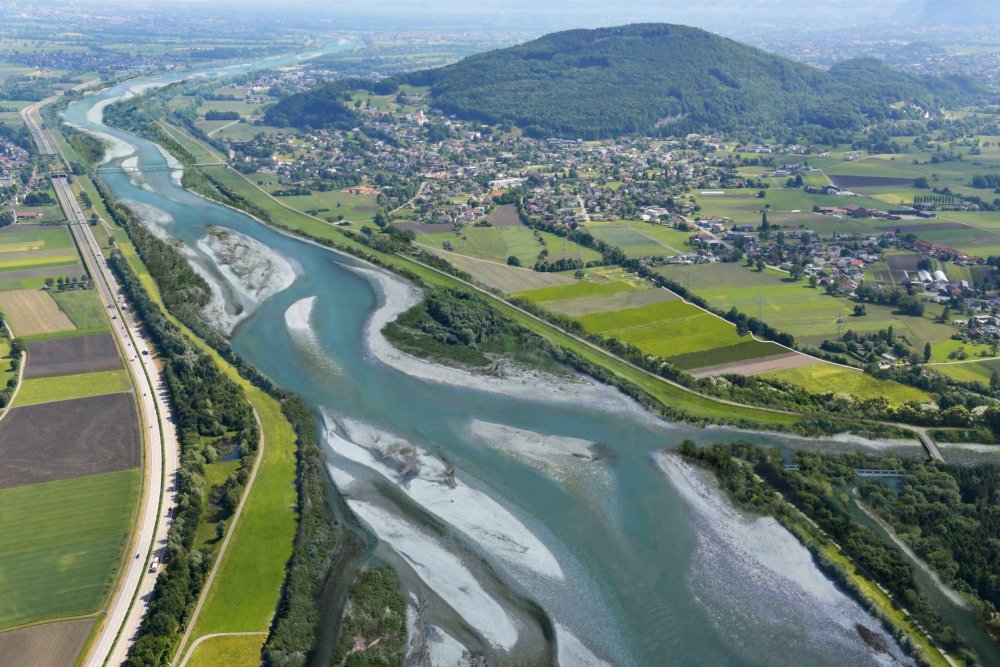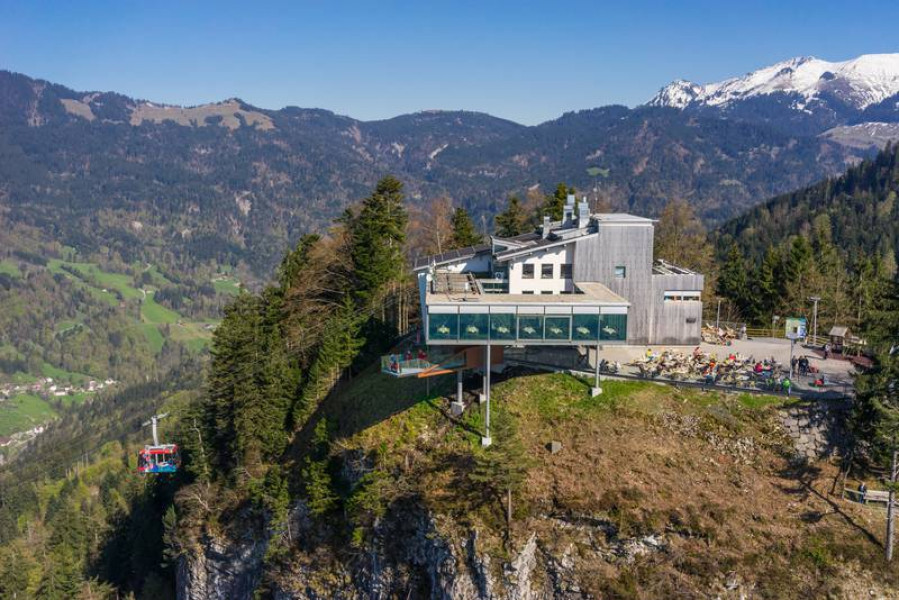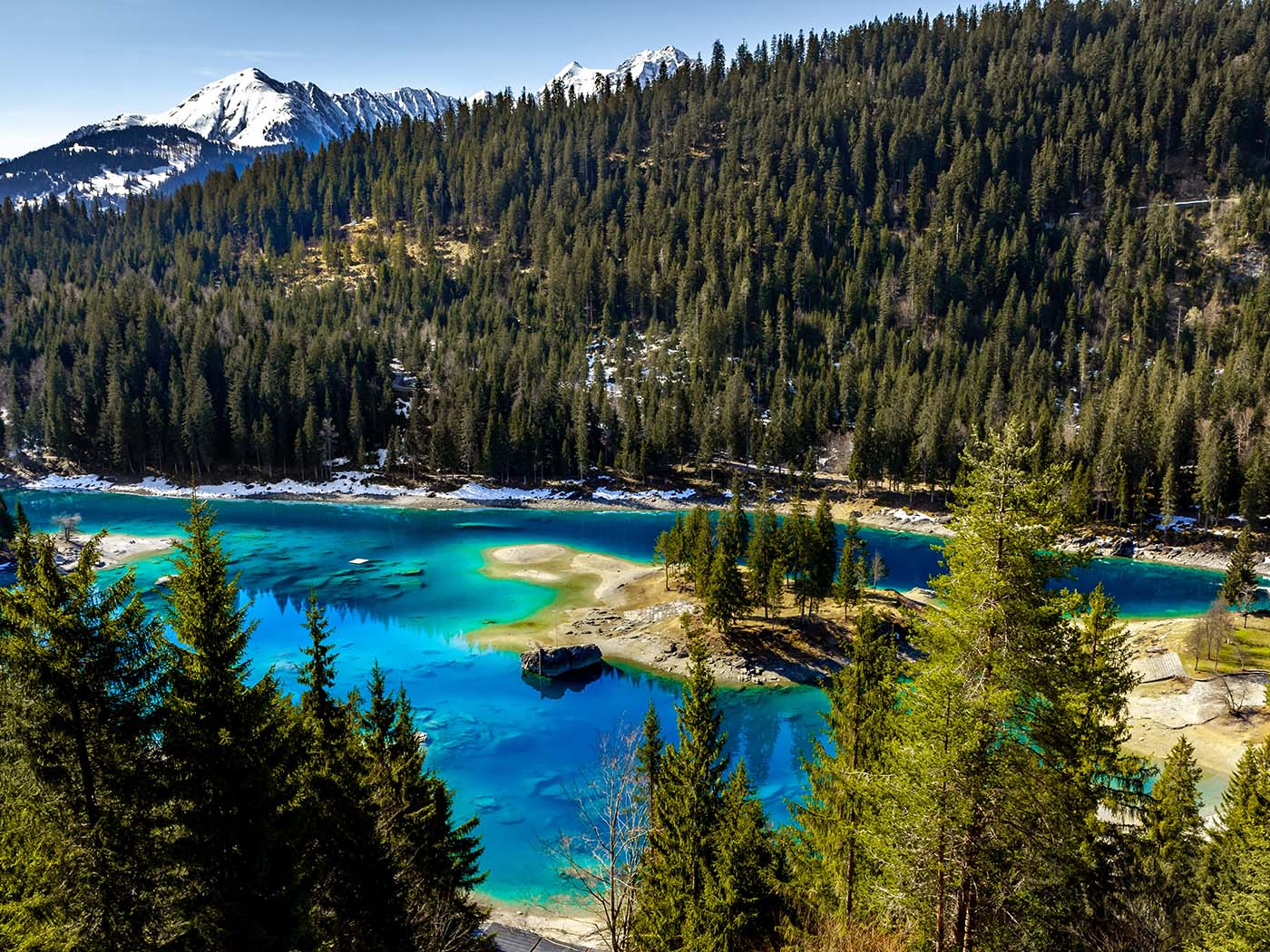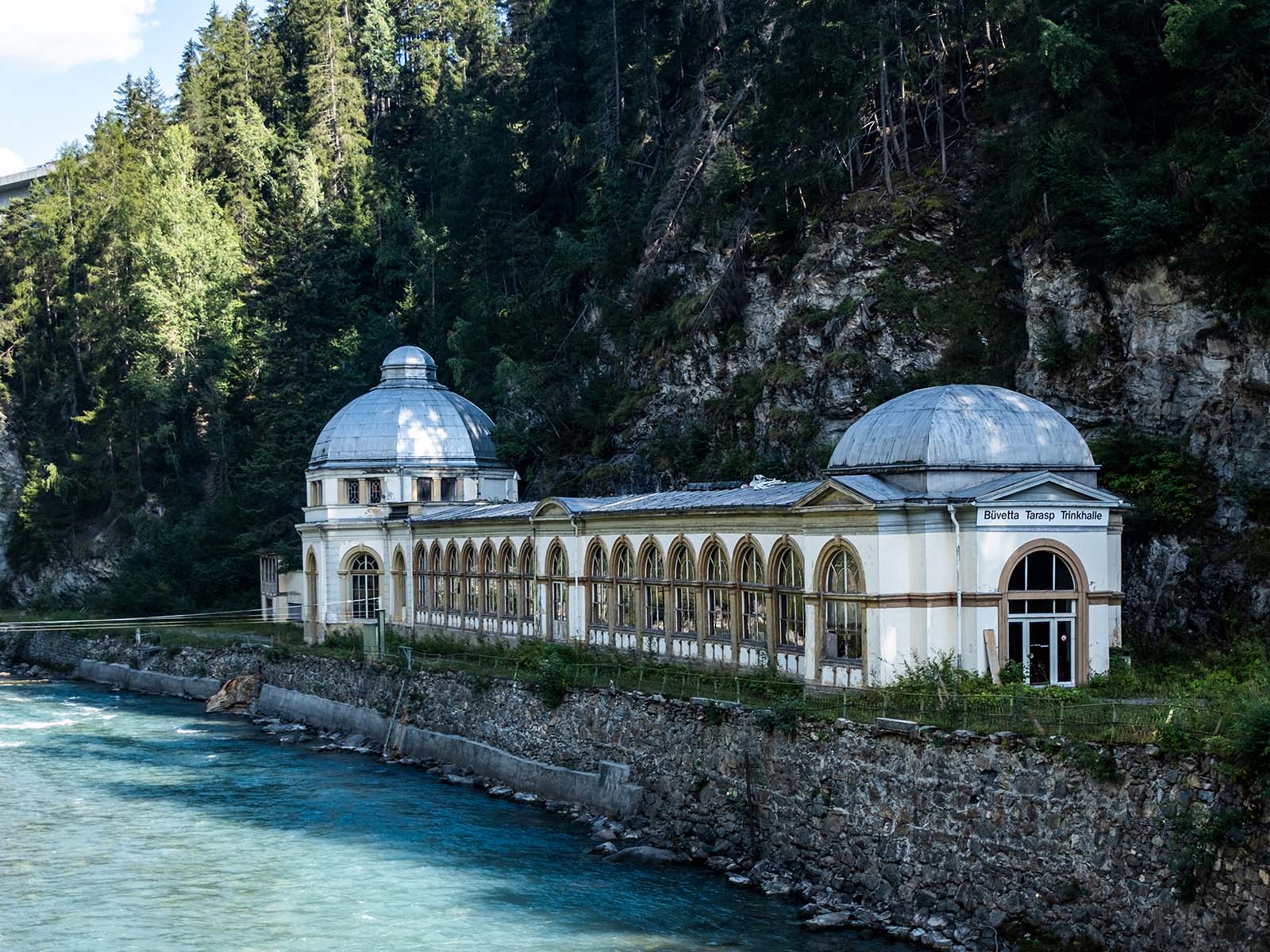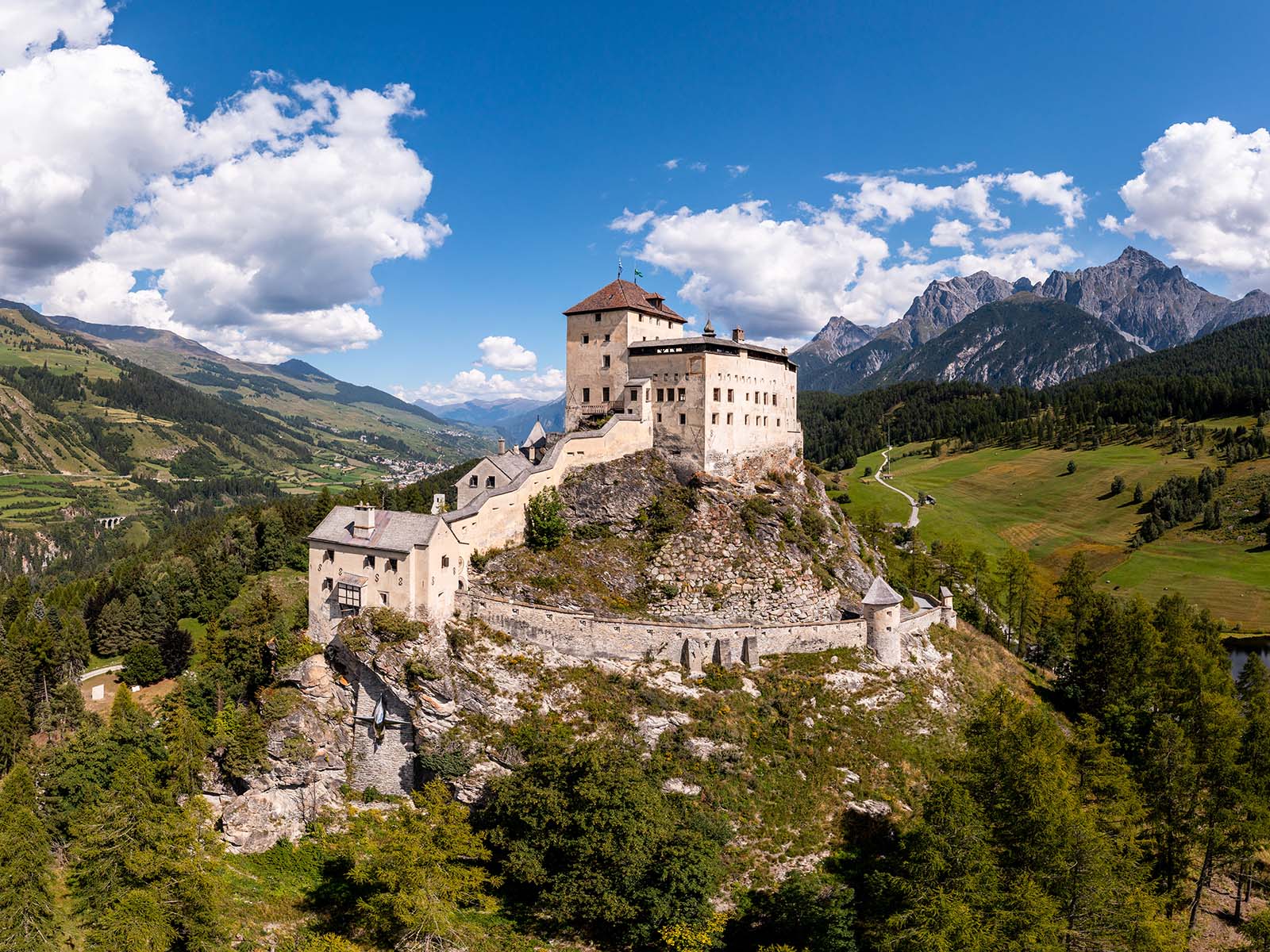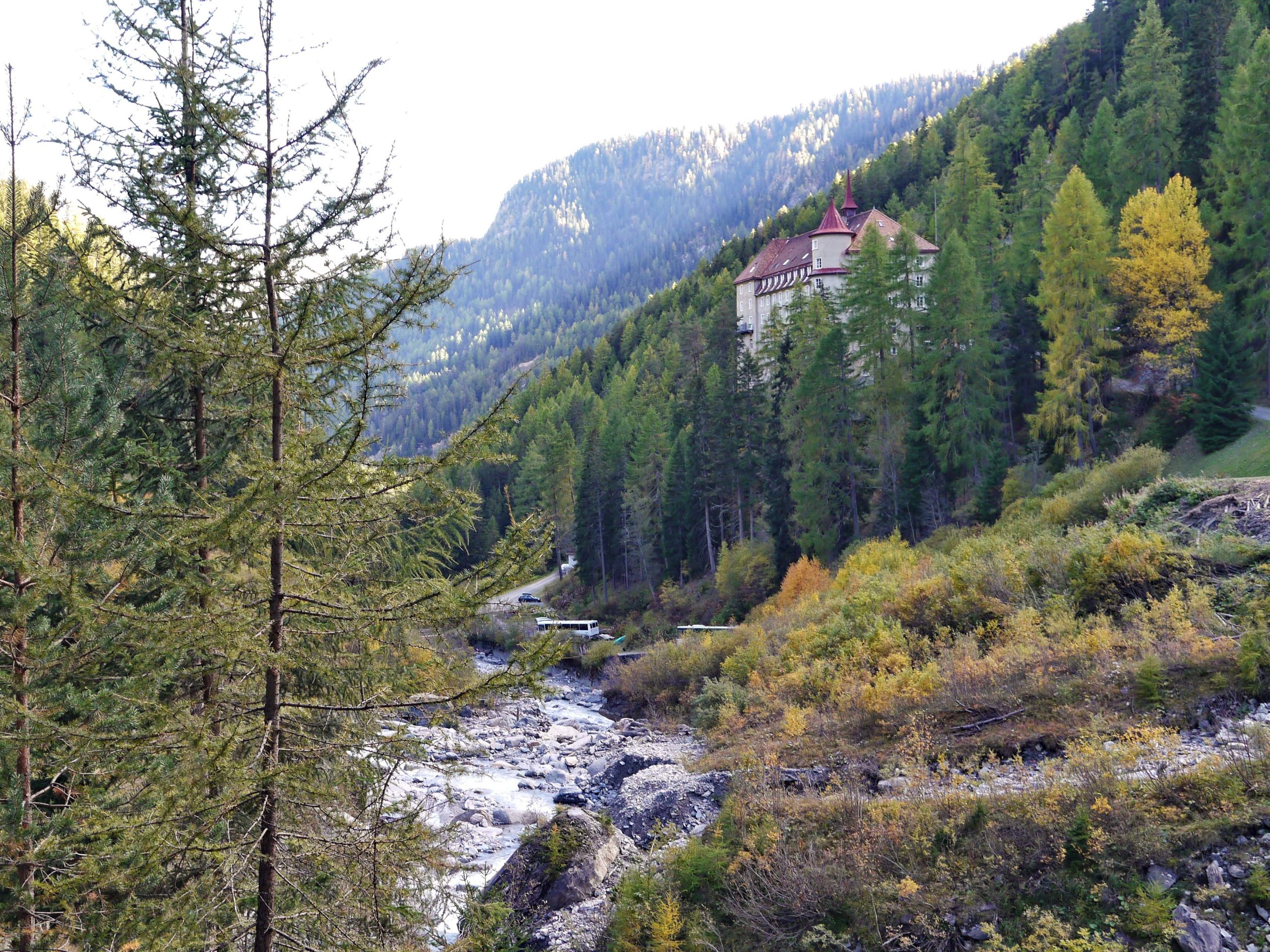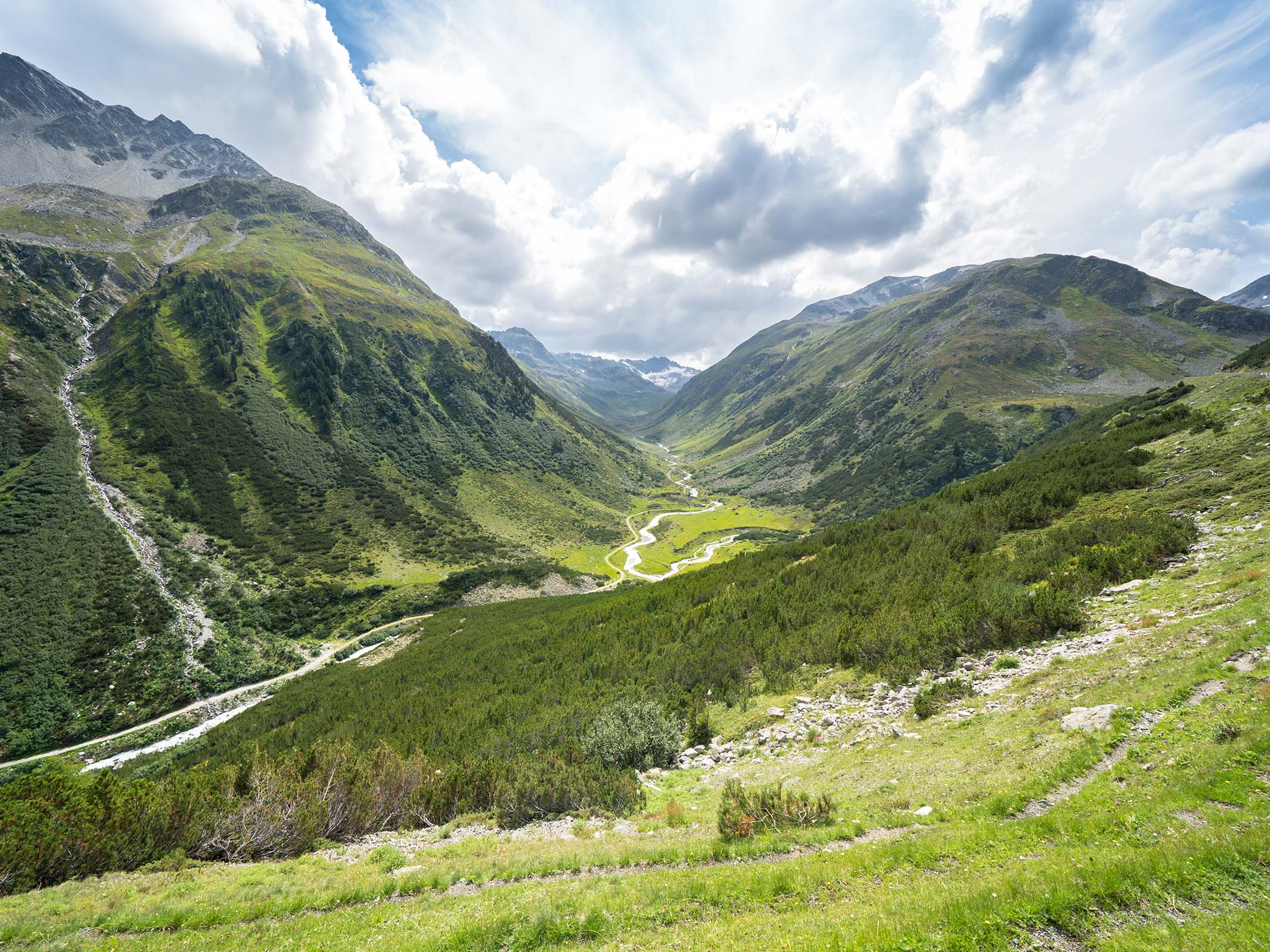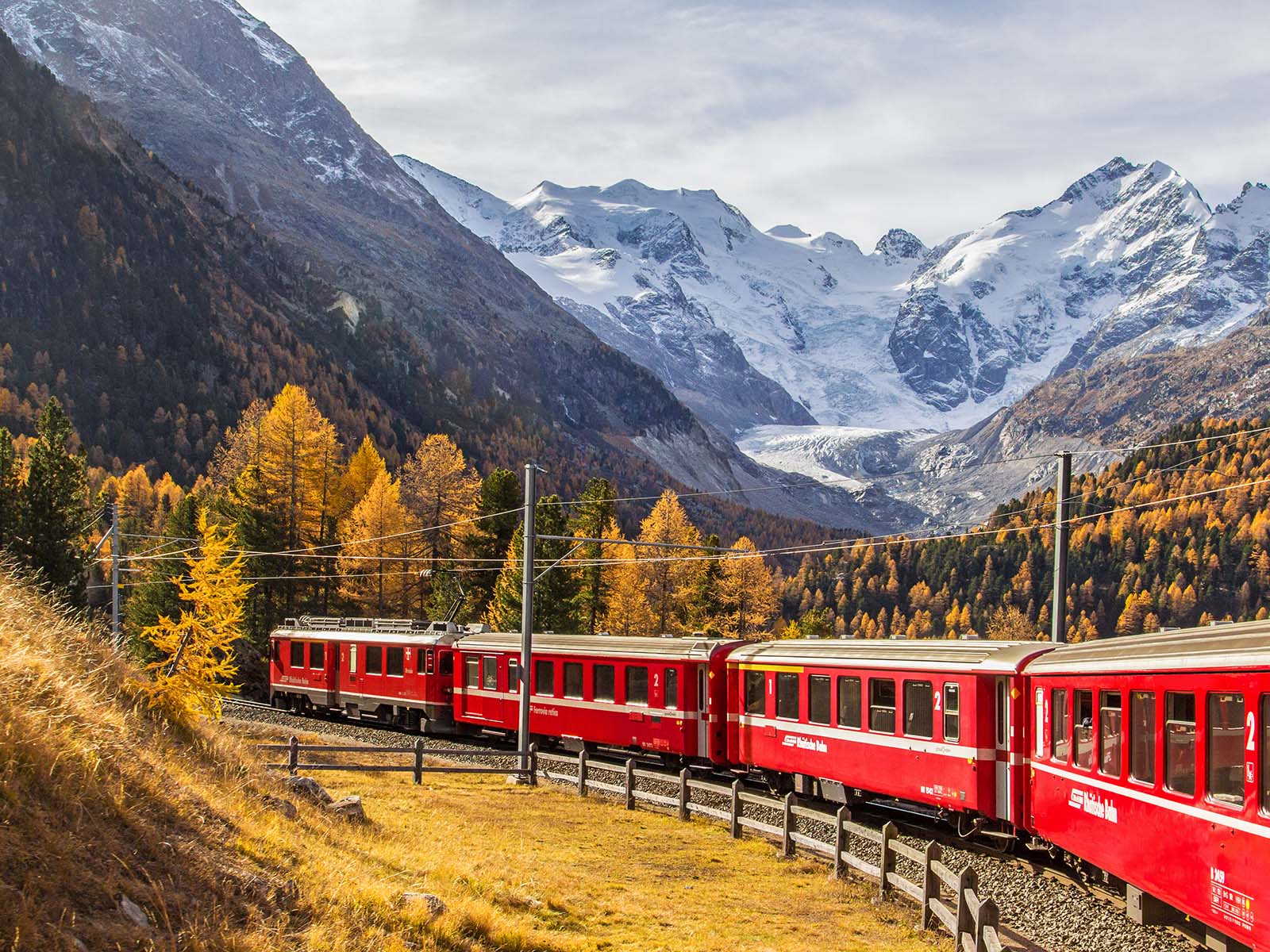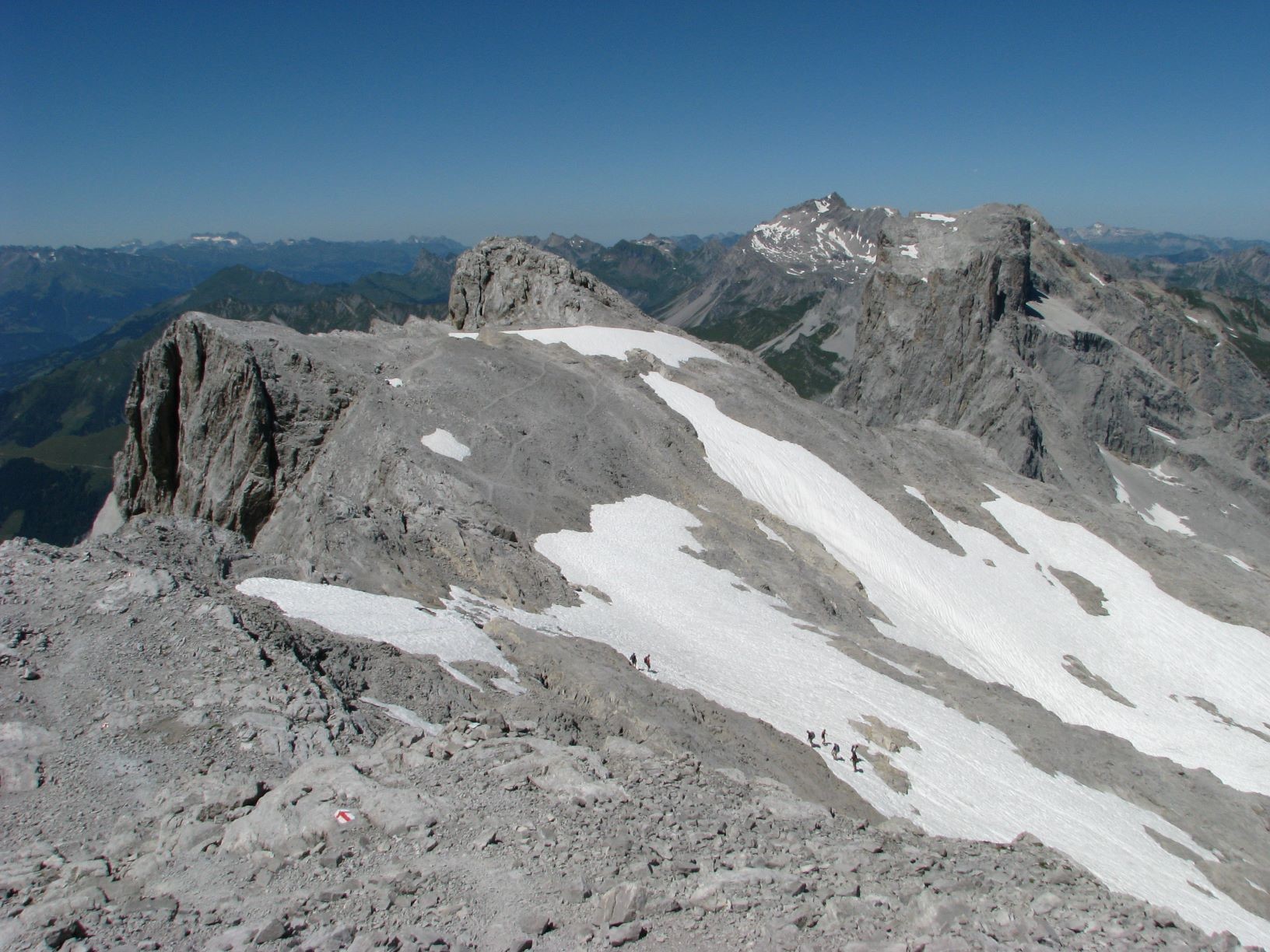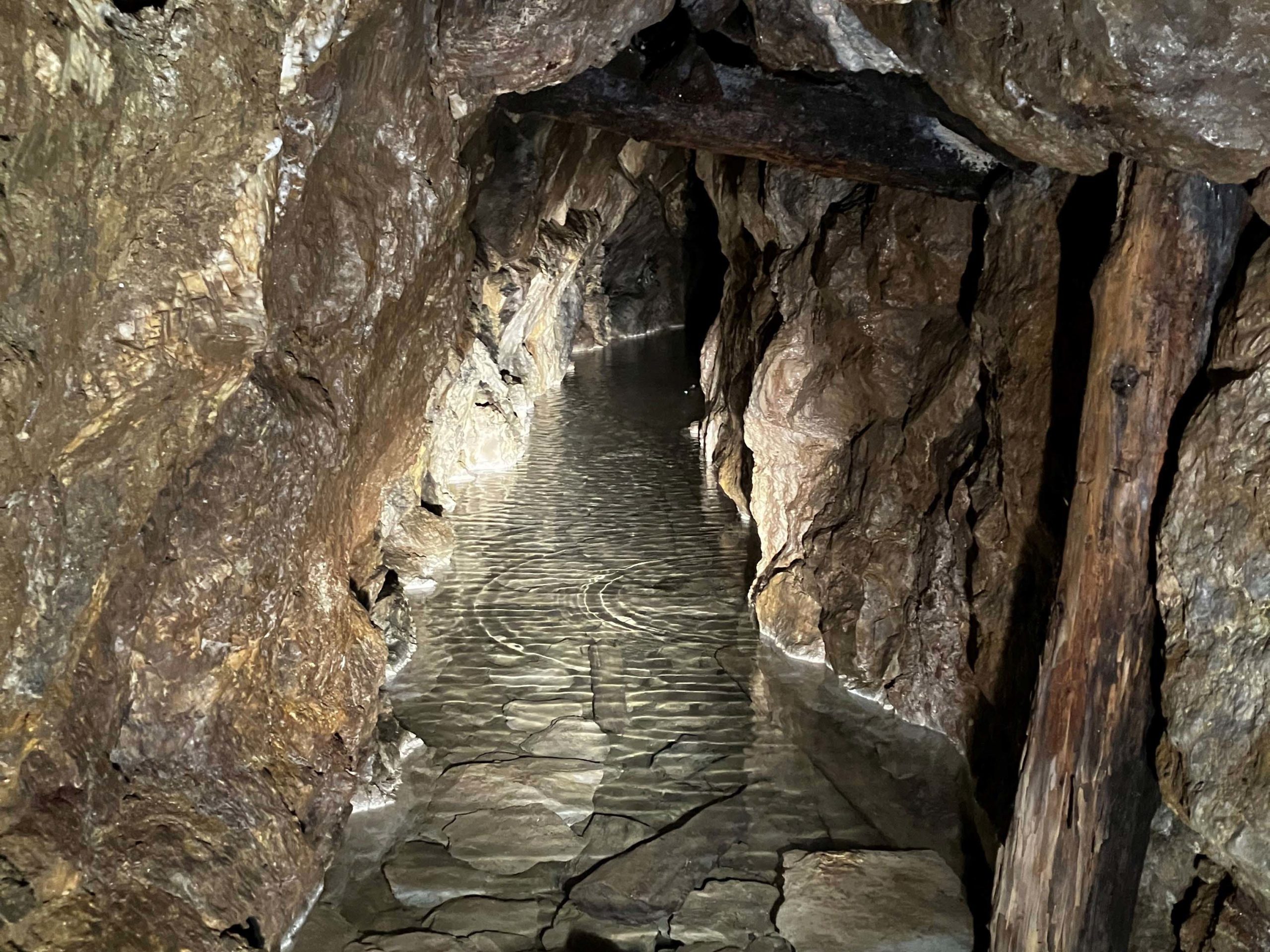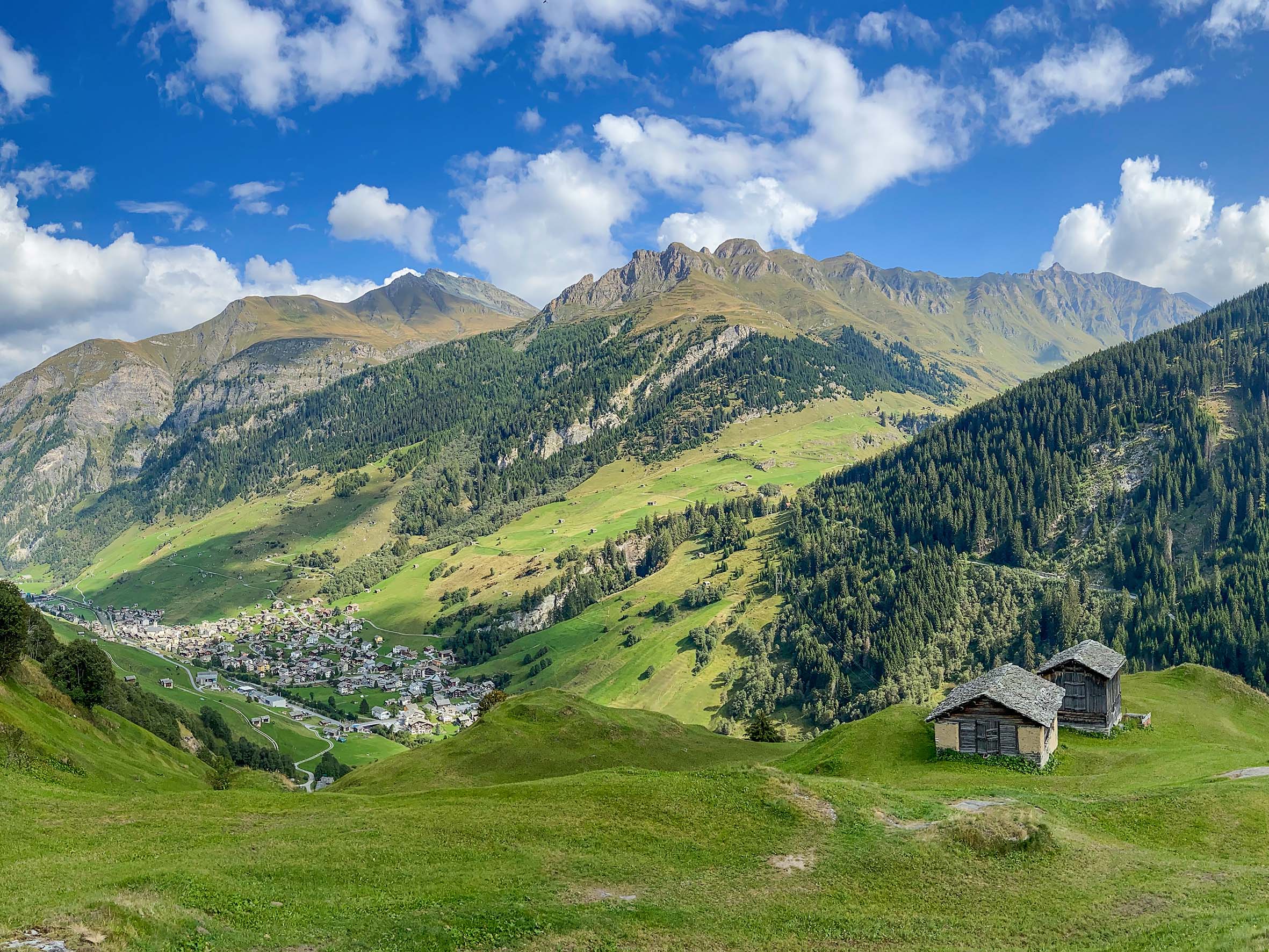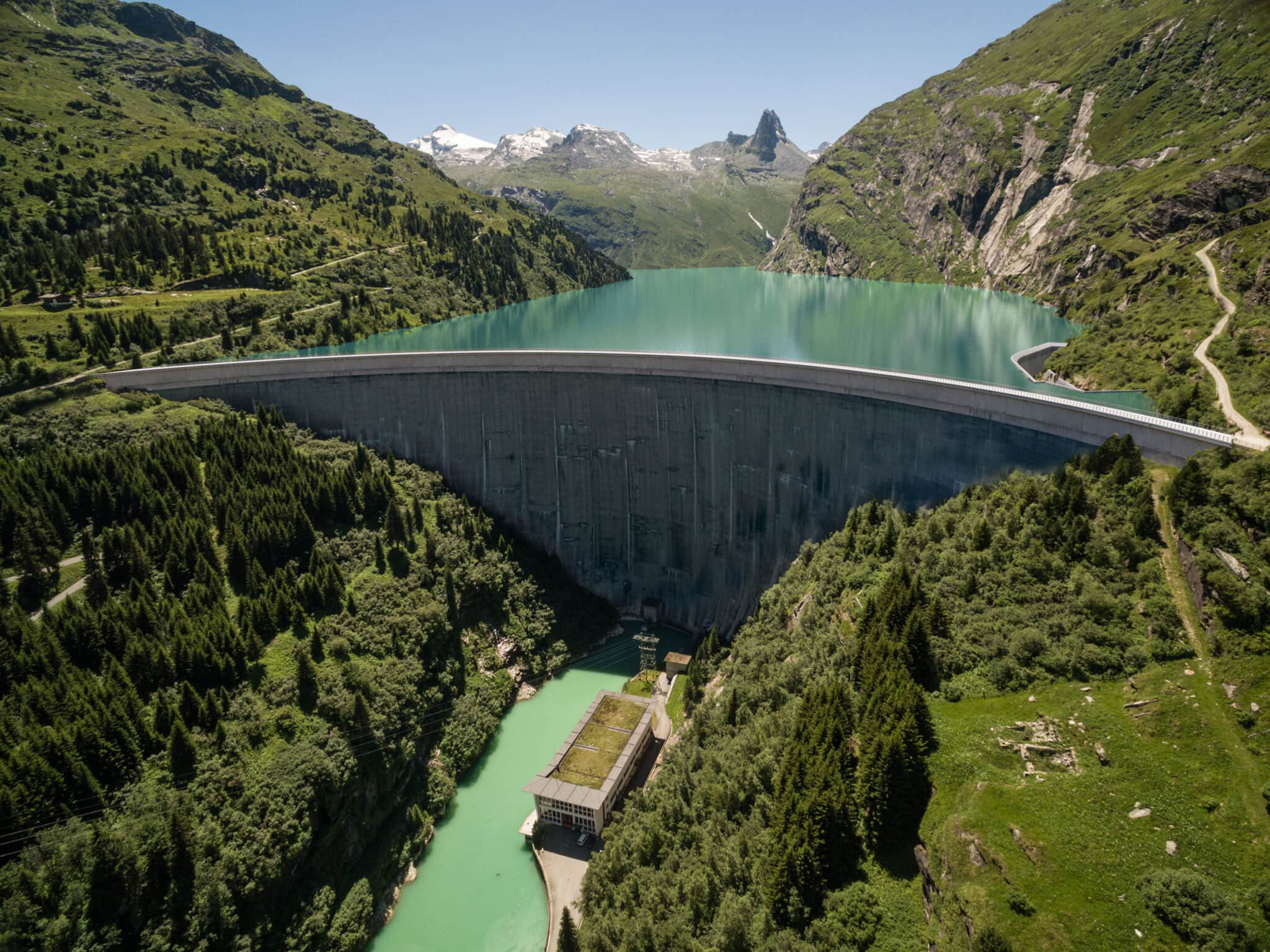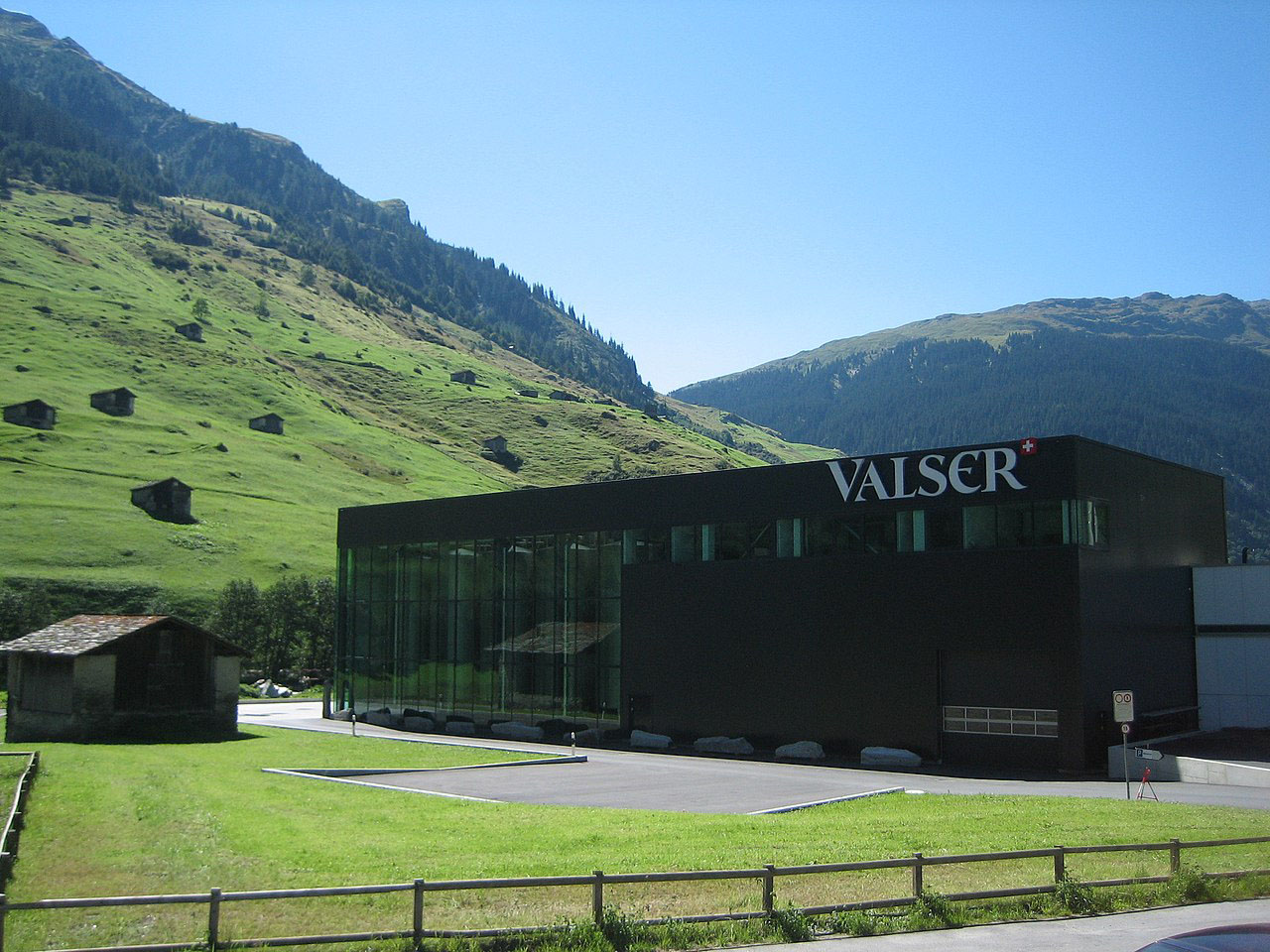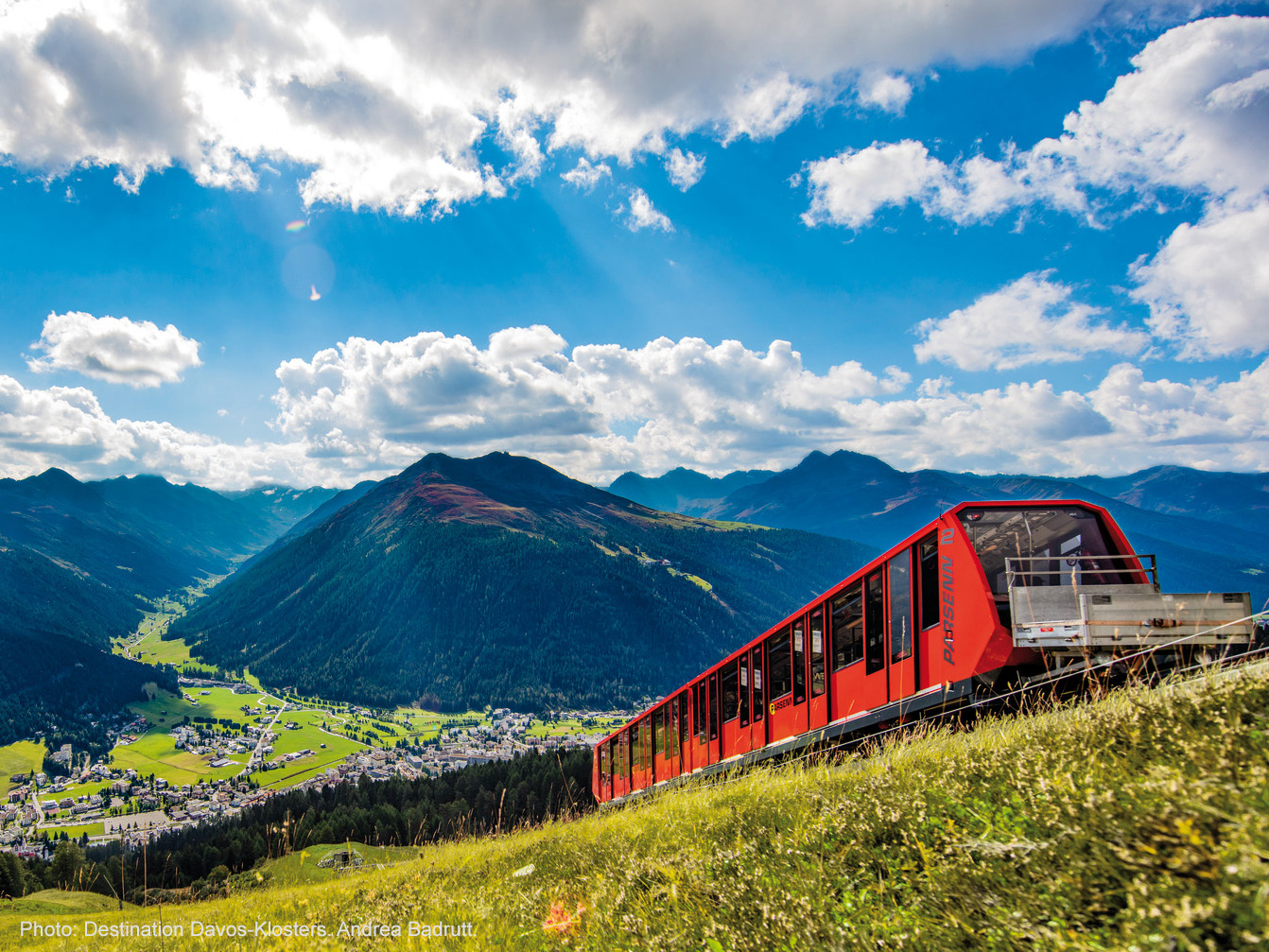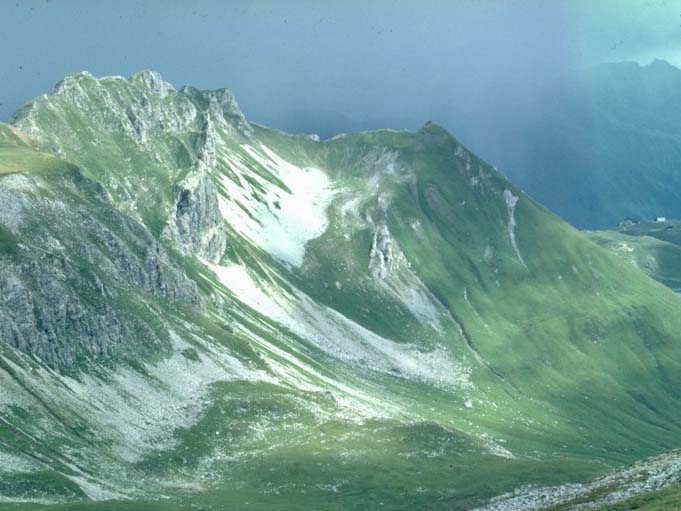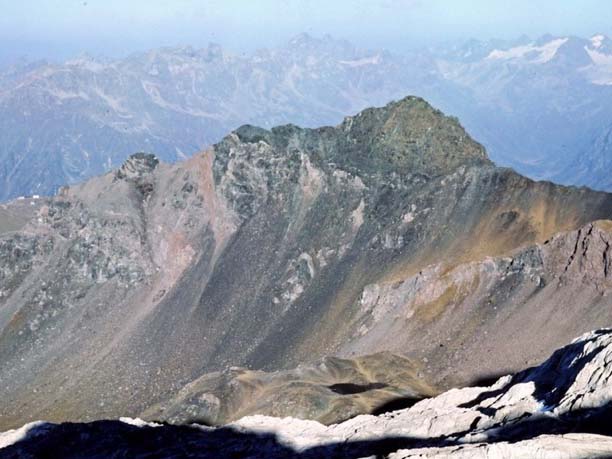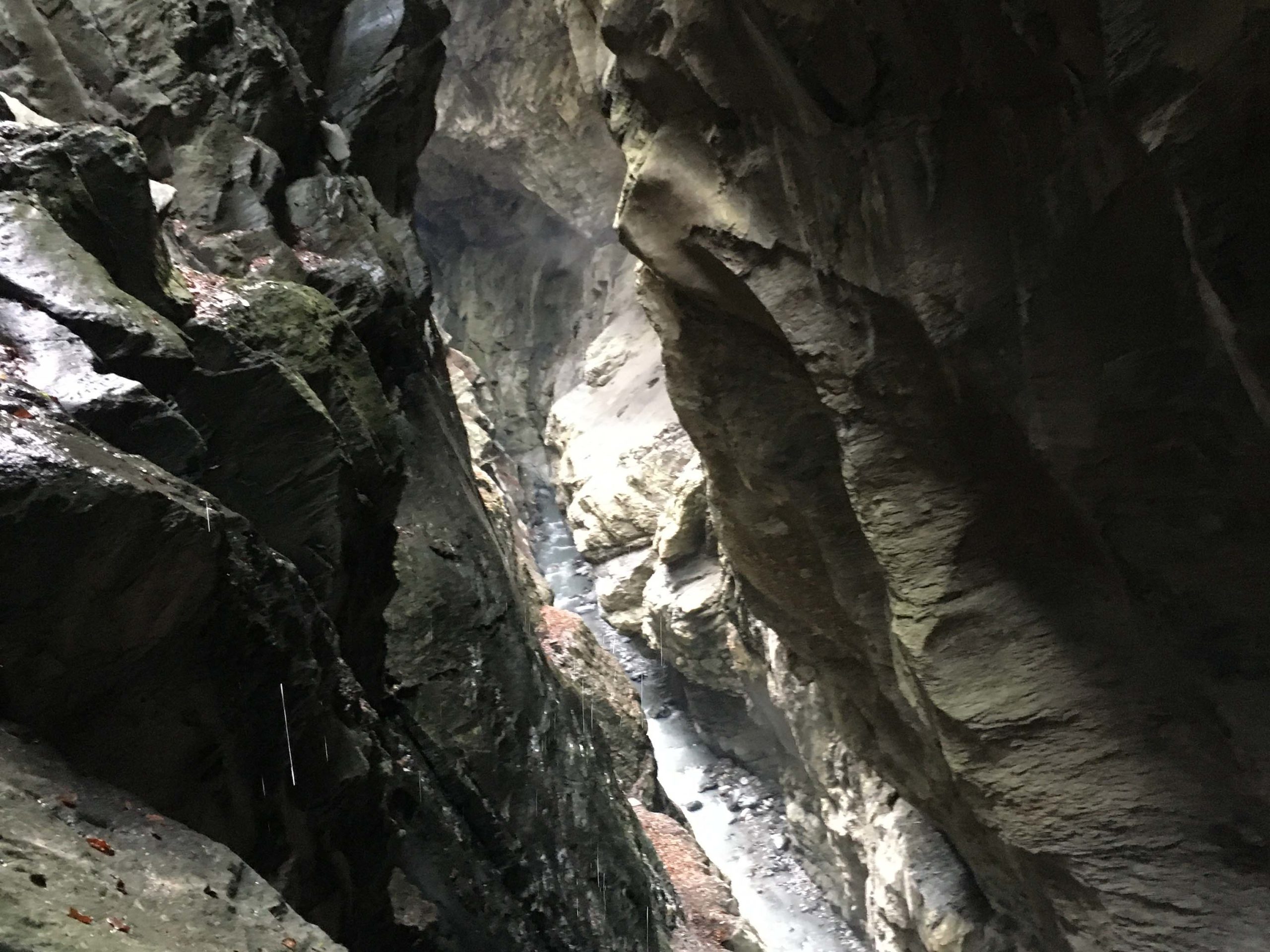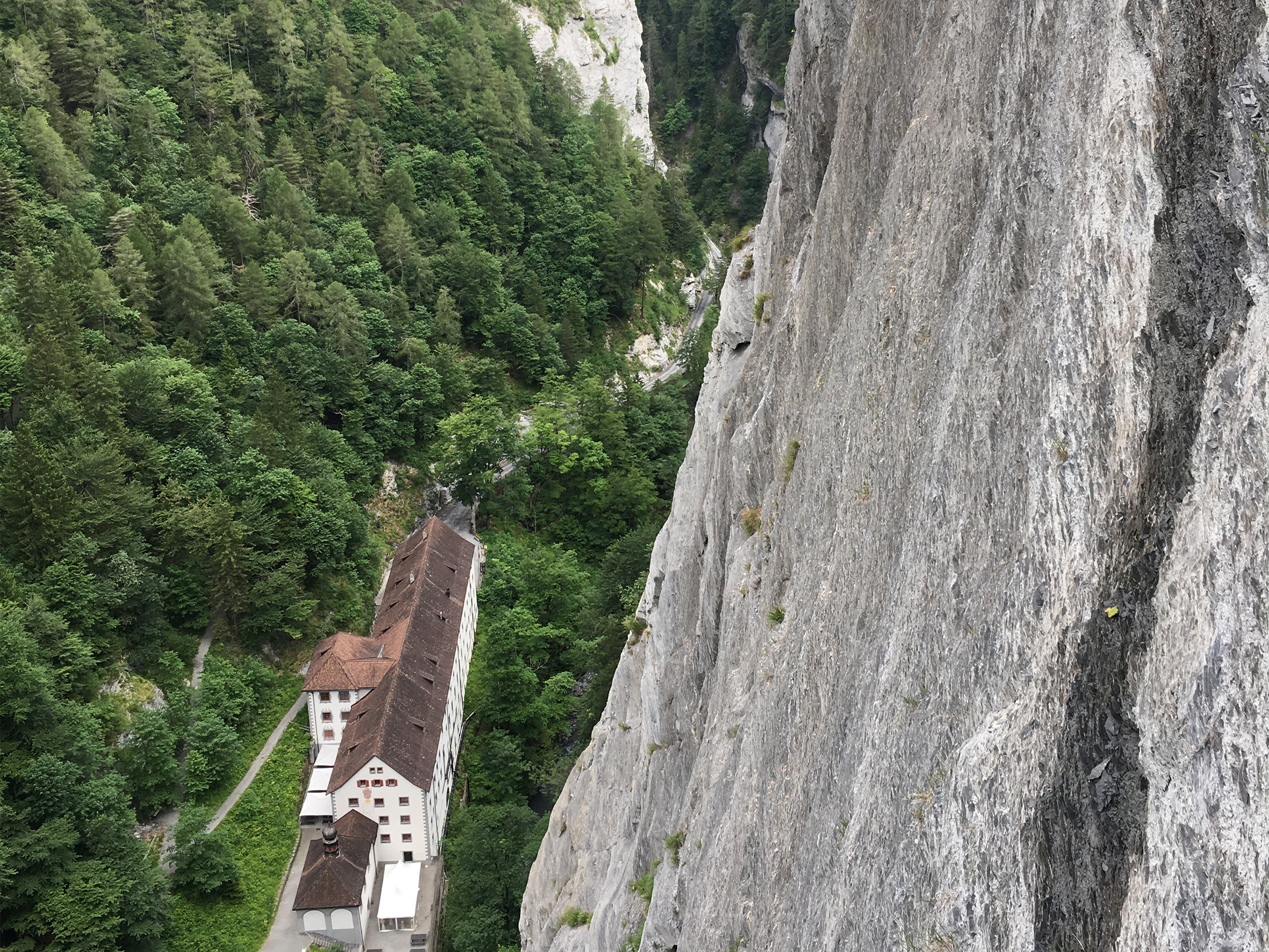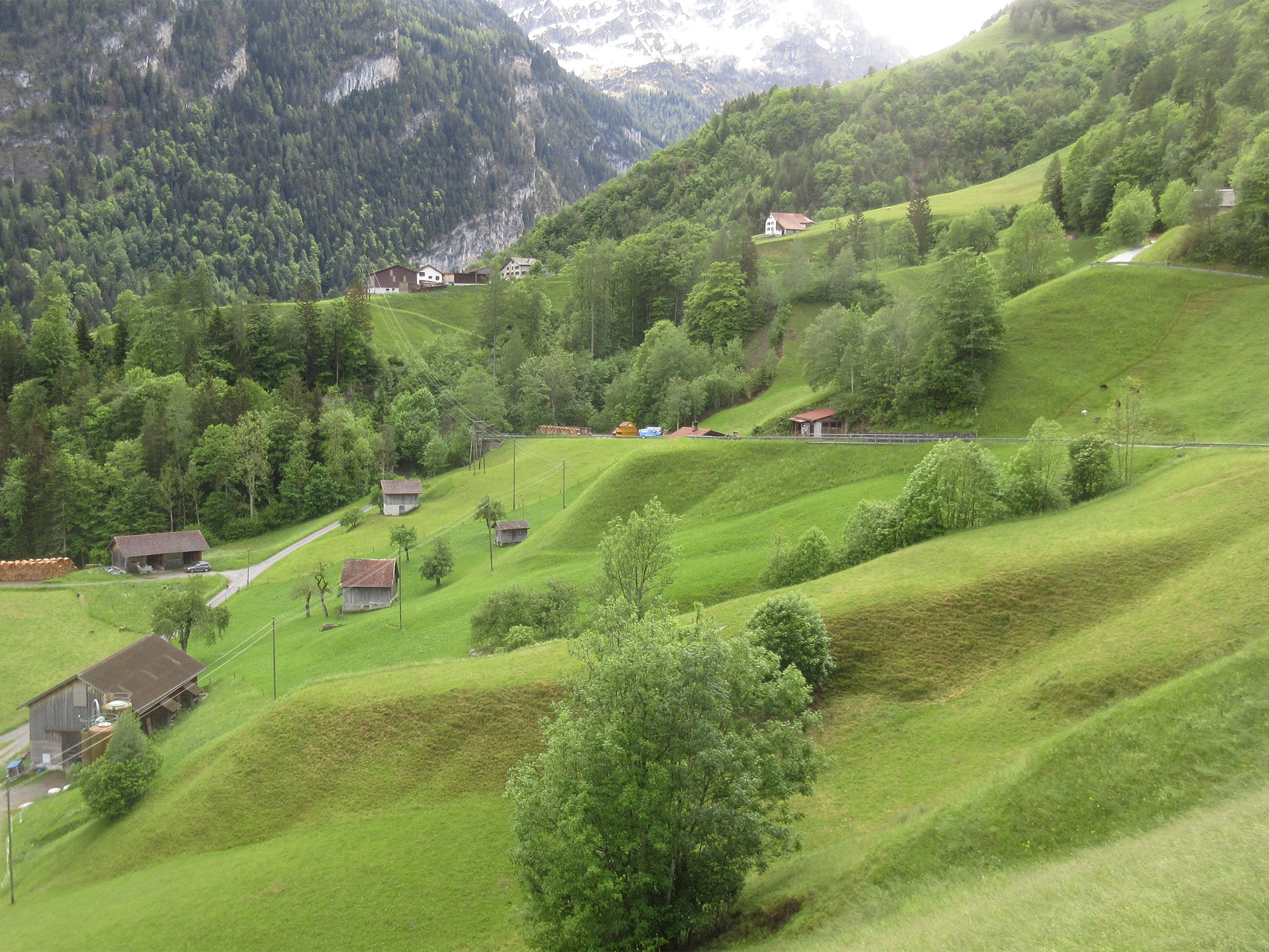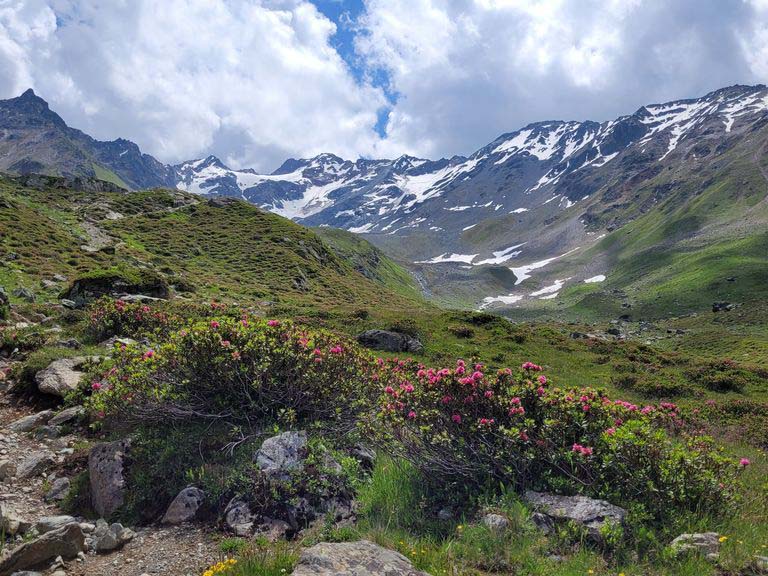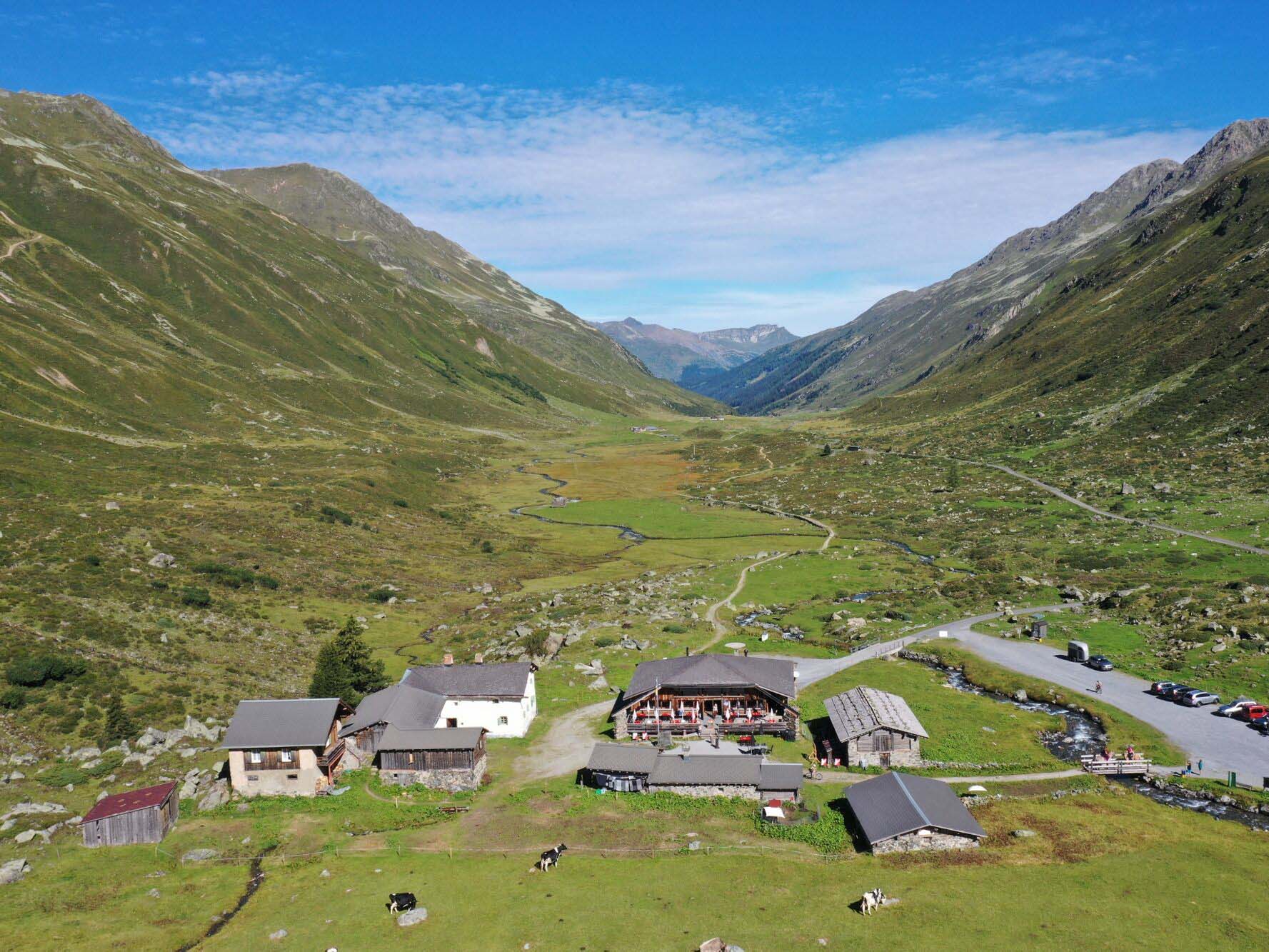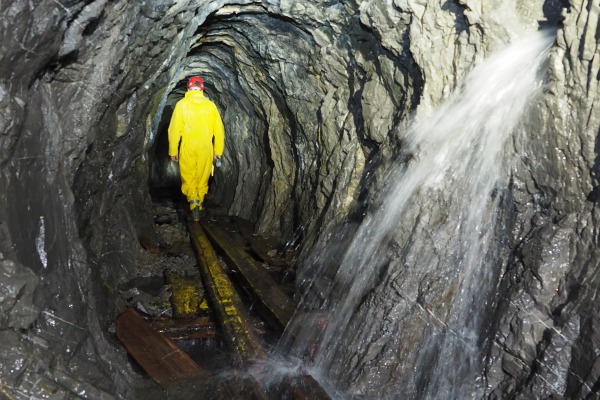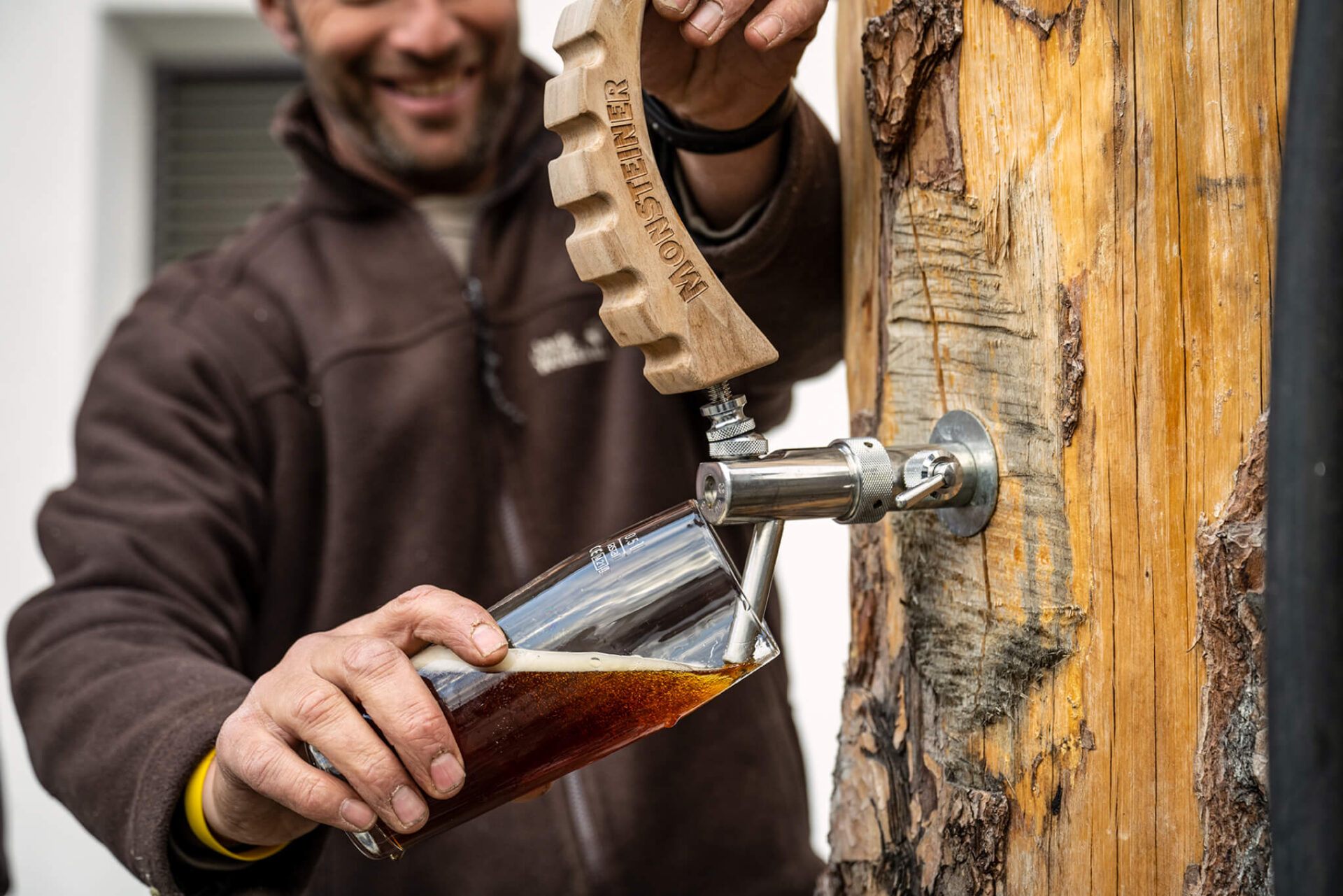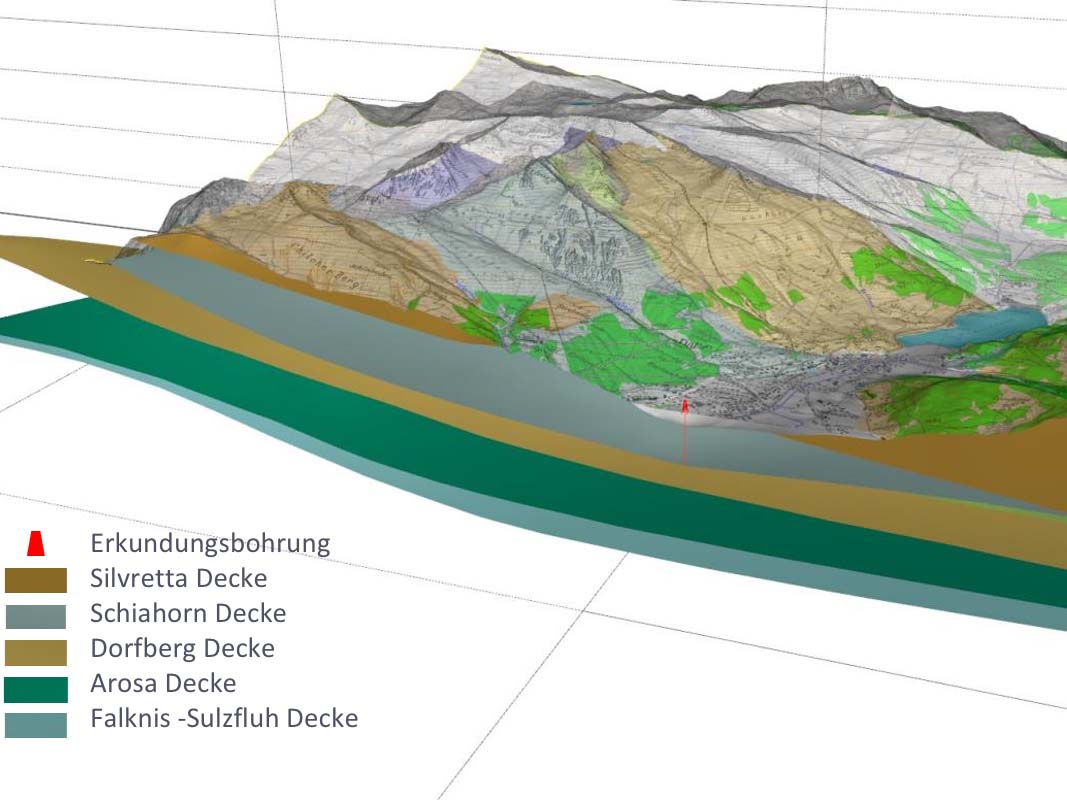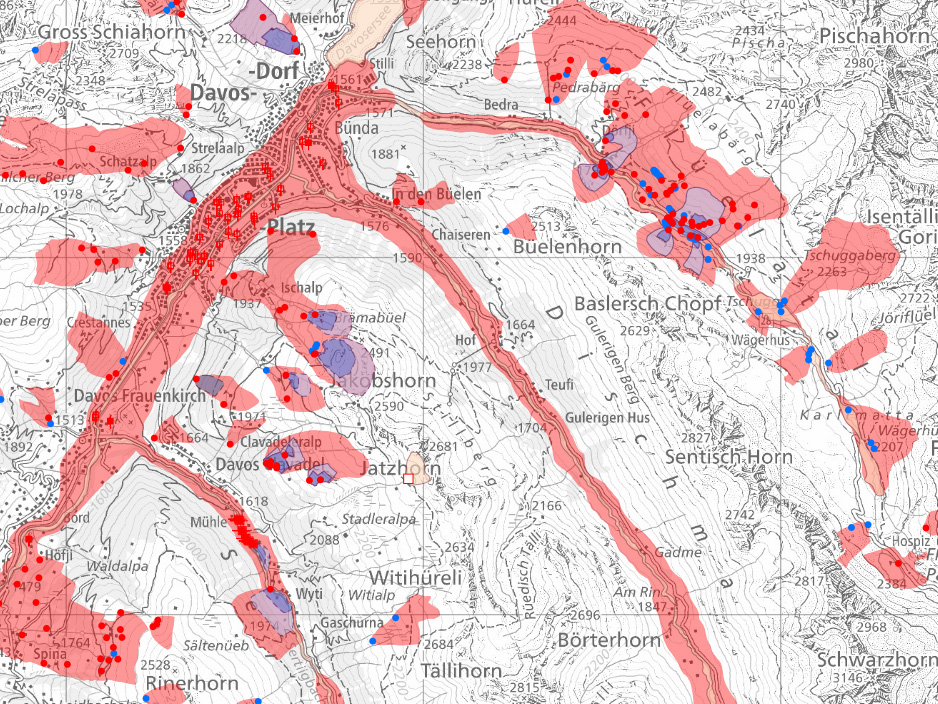EXCURSIONS
EXCURSIONS
On Wednesday September 11th, spectacular full and half-day field trips will take play highlighting a broad range of aspects related to groundwater in an Alpine setting.
Most excursions depart from the Davos Congress Center (see descriptions). Check descriptions for departure times.
The excursions are only available for congress participants. You can choose an excursion when you register for the congress. If you have already registered for the congress, log into your congress account and add an excursion to your booking.
We also offer a two-day post congress tour, travelling over (and under) the Alpes to the Bern capital region with scientific, scenic and historical visits.
F1) Brienz/Brinzauls Rock Fall and
Large-Scale Landslide
Figi, Daniel; BTG, Switzerland
Schneider, Stefan; CSD Engineers, Switzerland
Full day; maximum 2×50 participants
Meeting Point: In front of congress centre entrance
Time: 7:45
The mountain village Brienz/Brinzauls is endangered by unstable rock mass from above and the entire village moves down on a large landslide complex, which has already damaged its infrastructure. This full-day field trip presents the extensive geological and hydrogeological investigations to understand the mass movement processes and the role of groundwater. The elaborate early water warning system and monitoring concepts are discussed as well. The field trip include visits to the drainage tunnel under construction to stop the massive landslide and to the rockfall sites near the village in smaller groups.
Prerequisites
Safety helmet (provided), sturdy footwear (hiking boots or trekking shoes, no sneakers or sandals), backpack, clothing suitable for the weather conditions (takes place in all weather conditions), no claustrophobia
F2) The reshaping of the Alpine Rhine
and its impact on transboundary groundwater
Mähr, Markus; IRR
Schatzmann, Markus; IRR
Papritz, Kaspar; Dr. Bernasconi AG, Beratende Geologen und Hydrogeologen AG
Gmünder, Christian; Simultec AG
Full day; maximum 2×50 participants
Meeting Point: In front of congress centre entrance
Time: 7:45
The channelized Alpine Rhine on the boarder of Switzerland and Austria will undergo major transformation in the next decades to improve flood protection, improve ecosystems functions and enhance the recreational value. The connected alluvial aquifer plays an important role for groundwater supply in the region. After an introduction to the history of Alpine Rhine and the project given by members of the International Rhine Regulation (IRR), we will discuss the expected effect of the project on groundwater based on results from unique field experiments and modeling studies, combined with the visit of a pumping station. For lunch, we will take a cable car to a restaurant with a spectacular view over the Rhine Valley, Lake Constance and the surrounding mountains.
Prerequisites
Passport or ID card as we cross the border to Austria.
Sturdy footwear (hiking boots or trekking shoes, no sneakers or sandals), backpack, clothing suitable for the weather conditions (takes place in all weather conditions)
F3) Huge rockfall, glaciers, tunnels: a long history of impacts on groundwater in the Flims region
Jeannin, Pierre-Yves; ISSKA
Full day; maximum 2×40 participants
Meeting Point: In front of congress centre entrance
Time: 7:00
Limestone located below a thrust fault was exposed and karstified after the Würm glaciation. 9450 years ago a large rockfall dammed the springs and raised the groundwater by several hundreds of meters. Springs then fed the groundwater body which developed within the rockfall mass, creating lakes in depressions. About 20 ago, a tunnel was build though the limestone below the rockfall, crossing karst conduits with a significant discharge rate (~1 m3/s). It was used for hydropower production, but it drained the karst aquifer, thus drying out several springs, as well as one lake. Following extensive data acquisition and modelling work, a plan was developed to artificially feed the lake against tunnel drainage and drought related to climate change!
You will see various aspects of the rockfall, karst springs, a beautiful lake, the infiltration plant, the hydropower plant using groundwater, and a very nice landscape.
Prerequisites
Hiking boots required and reasonably good physical condition (~6 km walk in total).
F4) Carbogaseous springs in the Lower Engadine: Historic origin, past and present use of highly mineralized water
Bissig, Pius; Dr. Bernasconi AG, Beratende Geologen und Hydrogeologen, Switzerland
Balderer, Werner; retired professor ETHZ, Switzerland
Full day; maximum 30 participants
Meeting Point: In front of congress centre entrance
Time: 8:30
This is a full day excursion in the Scuol-Tarasp region with several stops to visit natural springs, captured springs and colored travertines: The mineral waters of this region show a great variety of hydrochemical characteristics and are mainly of the carbonic type with the highest mineralization of about 17’000 mg/l TDS. So-called mofettes – dry CO2 exhalations from the ground – are manifestations of geogenic gas production at depth.
You will also get to know old therapeutic practices by visiting a historic drinking hall.
The excursion ends with a visit to the Tarasp Castle, built around 1040, which houses a collection of ancient, modern and contemporary art.
Prerequisites
Sturdy shoes, warm cloths and rain jacket.
F4B) Biogeochemistry and medical use of mineral springs in the lower Engadine
Hanselmann, Kurt
Eglinton, Timothey; ETHZ
Full day; maximum 30 participants
Meeting Point: In front of congress centre entrance
Time: 8:30
Numerous springs and wells along the Inn River in the Lower Engadine deliver mineral-rich water that has supported a wellness culture for centuries.
The excursion begins with the trip across the Flüela pass where we enjoy beautiful views of the Silvretta mountains and the evolution of landscapes developing in glacial retreat areas. In the tectonic window of the Lower Engadine, we focus on the hydrological origin of the salty waters, the release of ferri-arsenics and Greenhouse Gases, formed by the subsurface “bio-geo-respiration” of organic matter stored in sedimentary rocks. What does the natural release of rock carbon imply for the global efforts to “decarbonize” the atmosphere?
Lunch will be served in the “spook hotel” Val Sinestra where infectious diseases were treated with “Arsenic antibiotics” emanating from natural springs. The excursion ends with a visit to the 2nd largest hydroelectric power plant of Switzerland, where the balance between the economics of power production and the requirements of protecting alpine ecosystems is illustrated.
Prerequisites
Sturdy shoes, warm cloths and rain jacket.
F5) A Swiss Classic: Ride the Mountain Railway and hike to a Glacier
Lindegger, Roman; UNINE
Full day; maximum 50 participants
Due to train availability, we will travel in two groups. You receive an email indicating which group you are in. The list is also available at the information desk.
Group A: Meet at Davos Platz Train Station at 8:15. Return to Davos at 16:52.
Group B: Meet at Davos Platz Train Station at 9:15. Return to Davos at 17:52.
Take the iconic red RhB mountain railway along the World Heritage Albula Line with its countless tunnels and bridges to Morteratsch (1:40 hour journey). Strengthened by a hearty local meal, hike to the Morteratsch Glacier and back. The hike takes about 1 hour each way on an easy, slowly ascending trail (about 150m altitude). There is no easier way to reach a glacier by foot. Explanations on the geology, hydrogeology and dynamics of the glacier along the way. Return to Davos by RhB mountain railway through the picturesque Engadine Valley.
Prerequisites
Hiking boots and good physical condition (~3 km walk in total, 150m altitude). Warm cloths and rain jacket.
F6) Carstic Plateau Mt. Sulzfluh (2817 masl)
Goldscheider, Nico; Karlsruhe Institute of Technology, Germany
Full (long) day (early departure 7am); maximum 20 participants
Meeting Point: In front of congress centre entrance
Time: 6:45
This full-day field trip leads to the summit and karst plateau of Mt. Sulzfluh, one of the highest and most spectacular karst landscapes in the Alps, and one of the best places to see nappe tectonics: A large tectonic nappe, consisting of dark, crystalline rocks, is thrusted on top of white, pure and highly karstified Upper Jurassic limestone. This special tectonic environment leads to unique hydrogeological phenomena, such as long-distance karst groundwater flowpaths underneath the crystalline nappe. The high plateau has a variety of karren and other karst landforms, strongly influenced by the action of snow and glaciers, as well as several large cave systems.
Mandatory Prerequisites: Good physical condition indispensible for this high Alpine excursion
Sturdy footwear (hiking boots required), good physical condition (1’000 m altitude gain), a head for heights, sure-footedness, backpack, weatherproof clothing. Only takes place in good weather
F7) Golden Sun – Old Calanda Gold Mine and Winery
Tschumper, Rolf; Hydrogeologist, Canton of Berne, Switzerland
Full day; maximum 15 participants
Meeting Point: 7:45 Davos Dorf Train Station
Return: 18:08 at Davos Dorf Train Station
We will travel to Felsberg by RhB railway. On a short but challenging hike, we climb up to the hidden former gold mine in Calanda near Felsberg. With a local guide and geologist, we will explore the tunnel where the gold was found and mined. On the way back to the village, we will visit the spring for the municipal water supply and the Felsberg vineyards. At the final aperitif with the mayor of Felsberg, we will be able to taste the wine, which is also called “Goldene Sonne”, and learn interesting details directly from the winegrower.
Mandatory Prerequisites: Good physical condition and mountain experience required
This is not a conventional field trip, but a alpine mountain hike (difficulty T3-T4), over steep and rocky, sometimes slippery terrain into a wet and very narrow mining system. Therefore, very good physical condition, mountain experience, sure-footedness and good equipment (sturdy mountain boots, weatherproof clothing, good torch, rucksack) are mandatory requirements.
F8) Mineral waters and hydropower in the Vals Valley
Stoll, Thomas; R.Wyss AG, Switzerland
Full day; maximum 40 participants
Meeting Point: In front of congress centre entrance
Time: 7:00
Vals mineral water, one of the most renowned bottled water from the Swiss Alpes, orginates from two springs with a contrasting temperature and mineral content, the St. Peter Spring (30°C, TDS 2000mg/L) and the St.Paul Spring (5°C, TDS 220mg/L). In this excursion, you will discover the geological and hydrogeological context of the two springs and visit the bottling plant. Furthermore, you will visit the Zevraila power station and learn about an expansion project. The project includes raising the dam and diverting some of the water via a 13km long tunnel to increase energy production.
Prerequisites:
Sturdy footwear (hiking boots or trekking shoes), physical condition to hike approx. 30 min in remote terrain, backpack, clothing suitable for the weather conditions
F9) A panoramic geological hike at high altitude across a Mesozoic ocean floor
Weissert, Helmut; ETH Zürich (em.)
Full day; maximum 30 participants
Meeting Point: At the bottom station of Parsenn funicular.
Time: 9:00
After a ride with the Parsenn funicular from Davos to Weissfluhjoch (2665 masl), our geological hike starts with an overview over the region, before we continue via the panoramic Parsennfurgga to reach Parsennhütte (lunch stop). In the afternoon our geological hike takes us then along Casanna to Gotschnagrat from where we will take a cable car down to Klosters and the RhB railway back to Davos.
The upper Pennine and lower Austroalpine nappes above Davos consist of imbricates derived from the Jurassic south-Pennine Ocean-Continent Transition (Tethys Ocean) and from the adjacent Austroalpine continental margin. The area provides insight into a Jurassic seafloor with serpentinized peridotites and associated hydrothermal ophicalcites covered by deep-sea sediments of Jurassic and Cretaceous age. On our way we will have superb views of the Austroalpine-Pennine nappe pile and of the Davos landscape shaped by glacial activity and a late Pleistocene “Rockfall”.
Prerequisites:
Sturdy footwear (hiking boots or trekking shoes), good physical condition to hike 6–7 km (ca. 500 m altitude gain) in alpine terrain, backpack, clothing suitable for the weather conditions.
F10) Tamina River Gorge and Hot Springs
Grischott, Reto; BTG Büro für Technische Geologie AG
Iten, Gillian; BTG Büro für Technische Geologie AG
Full Day: maximum 50 participants
Meeting Point: In front of congress centre entrance
Time: 7:30
Join us on a full-day excursion to the Tamina Valley to discover the significance of water as a sculptor of today’s picturesque landscape and its value for human society. Where the Tamina River has been cutting an impressively deep and narrow gorge into the rock, hot spring water has been captured and used since the 13th century for bathing. Further up in the valley, gravel terraces tell us about the older history of the valley when glaciers shaped the region.
Prerequisites:
Sturdy footwear (hiking boots or trekking shoes, no sneakers or sandals), backpack, clothing suitable for the weather conditions (takes place in all weather conditions)
H1) Explore the Dischma side-valley with lunch at an Alpine Hamlet
This event can be booked by congress participants and accompanying persons. Ideal if you want to do something together on Wednesday in Davos.
Half-Day: maximum 90 participants
Depending on your level of fitness and ambition, three options are available with a joint lunch at an Alpine Hamlet:
- a) Take the Davos local bus to the Alpine Hamlet and back, and just join for lunch. Departure from Congress Centre entrance at 11:45. Return to Congress Centre at 16:14.
- b) Hike to the Alpine Hamlet along easy but ascending (400m altitude) trails on the valley bottom with a guide and take the bus back (or hike back individually if you prefer). Given weather conditions, we will take the bus part way. Departure from Congress Centre entrance at 8:40. Return to Congress Centre at 14:55. Bring warm clothes, sturdy shoes and a rain jacket.
- c) Take the Davos local bus and hike on a more rugged, but safe path at the end of the valley (about 1h). Explanations on the geology and hydro(geo)logy of the valley. If you feel like, hike back individually to Davos along well-marked trails that cannot be missed. We will leave early in the morning to benefit of better weather. Possibility to do a shorter or longer hike. Meet in front of Davos Dorf Railway station at 7:50. Return to Davos Dorf Railway station at 14:40. Bring warm clothes, sturdy shoes and a rain jacket.
For all options, you have lunch together at an Alpine Hamlet with a choice between Fondue and the local speciality Capuns.
H2) Silver Mountain Mine Davos and Brewery
Half day; maximum 15 participants
Meeting point: In front entrance of Davos Congress Center.
Time: 11:30
Back at Davos Congress Center at 18:20.
Guided half-day tour to the former mining facility at Silver Mountain Mine near Davos Monstein with a visit to the ancient tunnel facilities and a tour of the ore processing plant. We will hike on a mountain path (ca. 2.5 h, 270 m altitude gain) which runs partly along steep slopes. Finally, we will visit the adjacent mining museum. Our tour ends with a small beer tasting at the brewery of Monstein close by in the same village.
Prerequisites
Safety helmet (provided), sturdy footwear (hiking boots, no sneakers), good fitness for the hike, a head for heights, sure-footedness, backpack, clothing suitable for the weather conditions, warm jacket (tunnel temperature ca. 5°C), no claustrophobia
H3) Geothermal energy in Davos
Half day; maximum 25 participants
Bolay, Stephan.; Geotest, Davos, Switzerland
Geothermal energy is playing an increasingly important role in Davos’ energy supply. A 452m deep borehole was drilled right next to the Congress Center and supplies energy to the Congress Center and other facilities such as the hockey stadium. In this excursion you will learn about the geological and hydrogeological investigations that have been carried out as part of the project. You will also learn about the geology of the Davos region in general. The excursion includes a visit to the technical installations.
H4) Water supply of Davos with mountain spring
Half day; maximum 30 participants
Meeting point: In front of Congress Center entrance
Time: 9:00
Members of the Davos Water Supply
Discover some of the springs that supply the water you drink during the congress. After a short bus ride through the Flüela side valley, you will visit several springs with some short hikes. You will have the opportunity to meet some of the staff of the local public water supply company and discuss with them the particularities of water supply in an Alpine region.


